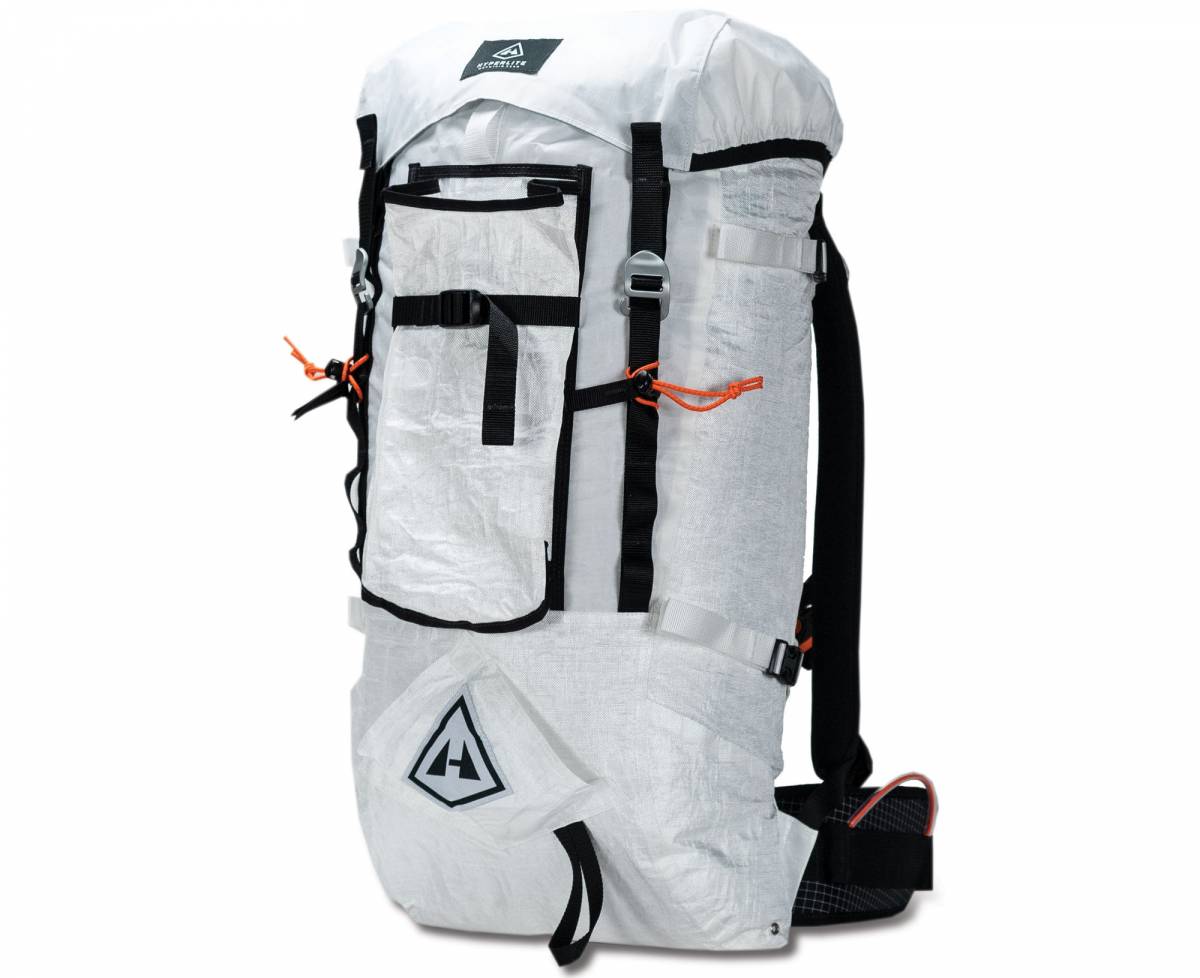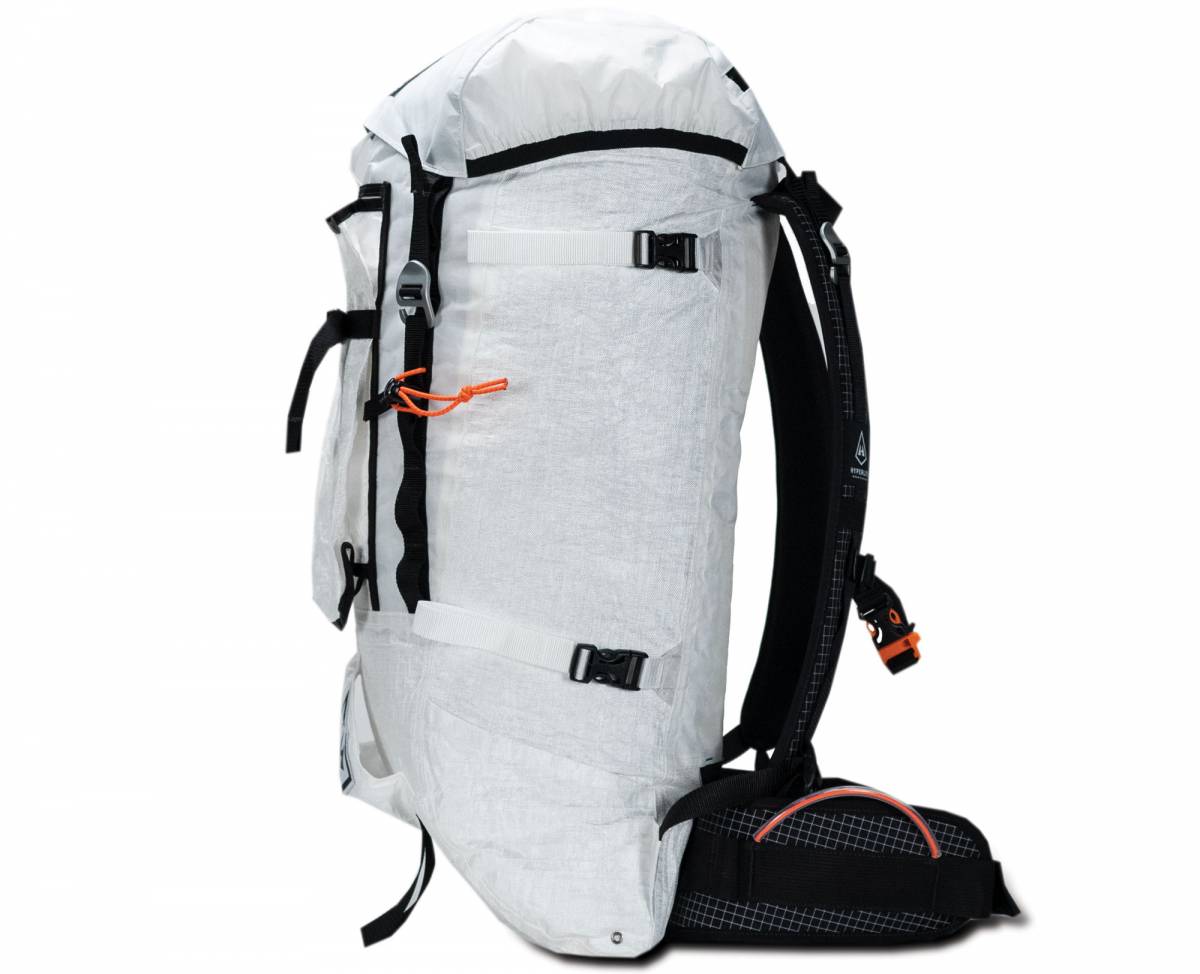Hyperlite Mountain Gear has brought its new Prism alpine climbing pack to the market, and it’s about as perfect as a pack can get.
The winter season is quickly approaching, and ice formations are already beginning to take shape across the country. This means climbers are transitioning from warmer days on rock to making delicate pick placements in thin ice.
The best part? All of the gear we’ve been staring at in the back of our closets is now applicable to the task at hand. The files are out, and a new set of screws is on order.
Devoted to winter and alpine pursuits, I understand and appreciate the need for solid, reliable equipment. I’m now the person with innumerable climbing ropes, packs, jackets, and gloves. Each piece of my kit plays a specific role and builds off of each other. I like having the right tool for the job.
Enter the Hyperlite Mountain Gear Prism alpine pack. I think it’s a strong contender for one of the top climbing packs on the market, but not without a few blemishes. I’ve tested multiple iterations of this pack over the past year and have brought them on everything from long alpine routes in the Cascades to single-day ice outings in Northern Minnesota and Canada.
The Prism stays true to the brand’s lightweight, durable ethos and includes a handful of key features that allow it to excel as a technical ice climbing and alpine pack. Continue reading for the full review.
Looking for a climbing pack that doesn’t weigh you down? Check out how the Prism compares to the rest of the options out there in GearJunkie’s Best Ultralight Backpacks Buyer’s Guide.
Hyperlite Mountain Gear Prism Climbing Pack Review
Weight & Material
The Prism pack weighs 1.82 pounds (827 g) not including the weight of the hip belt. The pack’s main body is made of Dyneema Composite Fabrics, making it light, strong, and waterproof. Dyneema fabrics (formerly Cuben Fiber) are high-performance, composite laminates. These fabric properties allow for continual flex at stress points without compromising strength or structural integrity.
I can attest to the durability of the pack, having used it for over a year and seeing minimal to no wear or tear. I also own Hyperlite’s 3400 Ice Pack, which is built from the same DCH150 Dyneema. This pack has also seen a handful of days in the field and performed extremely well on an extended climbing expedition in Alaska. This pack did tear at one point during the trip, but the ripstop component of the fabric held this to a minimal puncture.

Pack Capacity & Lid Attachment
The Prism pack has a capacity of 40 L and utilizes a single main storage compartment. The collar extends to provide additional storage and incorporates a double drawstring closure system to ensure moisture doesn’t creep into the pack when a lid isn’t present.
The single-compartment design is extremely efficient for loading and unloading. It also allows for the opportunity to increase or decrease pack volume as necessary. The removable lid attaches via a two-strap Velcro system on the back panel. It incorporates a zippered, waterproof pocket to a pack otherwise devoid of outside pockets.
An update to the final model sees the integration of elastic sides for additional weather protection and rope security.
The 3.5L lid is a nice option to have and adds to the pack’s versatility, but I find myself climbing without it the majority of the time. What I would potentially store here (snacks, gloves, etc.) I generally just shove in the pack itself or the pockets of my parka or climbing pants.
Additionally, the lid makes it more burdensome to retrieve items in the main compartment, especially while wearing less-dexterous gloves. I would be hard-pressed to use the lid in the alpine but can see its functionality for day trips or cragging. Regardless, if additional space is needed, the lid can be easily and quickly attached.
The pack can easily store a rope on the interior or exterior, and carrying it is comfortable and secure. The added weight is distributed well, and the ability to tighten the top overload strap allows for a stabilized placement that doesn’t shift while moving. If needed, a rope can easily be placed inside the pack.
Design & Modularity
One of the best features of this pack is its modularity. If you’re more conscious of weight than comfort, there’s the opportunity to strip down the pack to its bare essentials. The hip belt and shoulder strap system add little weight and almost no bulk, helping keep the pack’s low profile.
Both are lined with thin, flexible foam for additional comfort on extended carries. The foam inserts on each end of the hip belt are removable, and the entire belt can be removed for shorter trips or when carrying lighter loads. One contoured aluminum stay helps reinforce the structure of the pack and is also removable.
I’ve carried the pack in both its beefier and stripped-down arrangements, each time impressed with the performance and overall comfort. When using the hip belt and stay, this pack carries heavy loads better than any other alpine pack I’ve used.
The pack integrates a diamond-shaped pocket for tool heads with reflective bungee attachments connected to daisy chains up high. I find this layout to be the biggest drawback of the pack, but mostly due to personal preference.
The geometry behind this design works, but I prefer a bungee-clip component that slots through the head of each tool. Placement of more technical tools (think Cassin X-Dreams or Petzl Ergonomics) is slightly more difficult with this configuration given shape and contour.
When trying to attach the bungee cord around the shaft of the tool, the head can pull upward on the pocket, creating unwanted pressure. Although I haven’t experienced wear-and-tear issues with this pocket through the first year of trial, if I had to place money on the pack’s main weakness point, I would bet on this.
The Prism also features an additional axe loop for nontechnical mountaineering tools. I find this feature redundant and believe it could be removed altogether. You could simply use the standard pocket provided to hold a nontechnical axe if needed.
Standout Features
Although they didn’t reinvent the wheel, HMG dialed in the front crampon compartment. It fits any pair of technical or general-purpose crampons well and integrates an easy-cinch closure system for added security.
I’ve never held concern about my crampons falling out, even if the pack becomes lopsided or completely tips over. I prefer a crampon pouch to a bungee attachment system as it’s more reassuring to travel with.
It’s also more efficient given you don’t have to fight with taught bungee cord if switching in or out of your crampons. And, better yet, it eliminates the need to deal with loose cord after removing a portion of your gear from the pack. Simply slip them in the pack and snap the buckle or perform the opposite maneuver for removal.
The pack’s waist and shoulder straps are fantastic, and I find the Prism to have one of the best carry systems on the market. It integrates a removable hip belt with 1/8-inch closed-cell rigid foam and 1/4-inch closed-cell foam padding, with a similar setup for the shoulder straps. Gear loops and ice clipper slots add to the organization upfront if needed, and I’ve hauled using a sled with no issue.
My favorite parts of the bag are the low-profile side sleeve pockets. I’ve always wanted a pack with this feature – and now I have it. Having climbed multiple routes in need of pickets, I can attest to how nice these pockets can be.
If you’ve ever brought pickets on a climb, you’ll understand. I’ve even modded some of my previous alpine packs to better hold and access pickets. No more attaching a runner or steel cable to a side strap and hoping it doesn’t end up near your hip. This also makes for an efficient system to carry wands or stow a trekking pole.
See below for additional specs and features.
Prism Alpine Climbing Pack
- Dimensions
- Top circumference: 38” | 96.5 cm
- Height (cinched): 28” | 71.1 cm
- Height (fully extended): 35” | 88.9 cm
- Materials
- Body: DCH150 (white), 375-denier DCHW
- Lid: DCH150 (white), 210-denier nylon (gray)
- Extension collar: 210-denier nylon (gray)
Final Thoughts
After extensive use, I can confidently say Hyperlite Mountain Gear has raised the standards for alpine packs. Surely, other stellar alpine packs exist on the market, but a couple of unique features set the Prism apart. The pack carries extremely well on approaches and wears even better during sections of technical climbing. Steep snow and ice are no problem for this burly, low-profile pack, and I feel completely unhindered during long blocks of leading.
If you’re looking for a new alpine or technical ice climbing pack, the Prism should be a top consideration. Its design is top-notch, and it carries as well as — if not better than — other similar packs on the market. With an MSRP of $395, the Prism isn’t cheap. But if comfort and ultimate usability in the alpine is what you’re after, it’s worth the price tag.
Visit Hyperlite Mountain Gear’s website to learn more about its new Prism collection.












